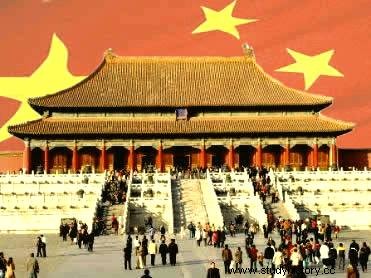
Today known as one of the main tourist attractions in China , the Forbidden City is considered one of the most interesting architectural works of this ancient civilization. Its construction was elaborated during the rule of Emperor Yung Lo, the third monarch of the Ming dynasty. In addition to being the decision-making center of the Chinese empire, the city marked the distinction between royalty and subjects.
Its construction took fourteen years to complete. The delay in construction does justice to the area of 720 thousand square meters occupied by the entire family of the emperor, a large number of servants, concubines, heirs and eunuchs. The name “Forbidden City” was given because of the rigid security system that controlled the exit and entry of people in the place. The vast majority of employees who lived in the city could live without ever setting foot outside that sumptuous building.
The southern gate was one of the main access routes to the Forbidden City. Only a few royal advisers, members of the military class, and the Emperor himself were free to enter and exit those gates. Security was not lacking in that huge building. A great wall 3.4 kilometers long and ten meters high protected the entire city. In addition, a large ditch six meters deep prevented any possible invasion.
Not everything in the city was about security and grandeur. The beautiful Imperial Garden occupied an extensive area where the imperial family could spend hours meditating, playing chess or drinking good tea. In the central portion of the garden was the Imperial Peace Hall, a kind of religious temple built in honor of the goddess Xuan Wu, the deity of the waters.
The special devotion paid to Xuan Wu was a consequence of a constant problem experienced with the fires that happened in the city. The risk of fire was constant, given that the vast majority of buildings were made of wood. In addition to the accidents and natural phenomena that propagated these fires, many real builders started arson in order to profit from hiring their labor.
All the decoration of the Forbidden City was inspired by the ancient art of feng shui, a method of decoration that promises to attract good fluids with the correct arrangement of buildings and objects. Superstition was quite great in the decoration of all the buildings found there. The vast majority of the city's roofs were painted yellow, a color associated with imperial power and prosperity. In addition, the use of animal figures distinguished the importance between architectural constructions.
For five centuries, the Forbidden City was the ultimate symbol of the supremacy and political instability of a regime controlled by a single sovereign. Until 1911, twenty-four emperors controlled the vast Chinese territory within the confines of this sumptuous architectural creation. After that, a republican-inspired revolt made Emperor Puyi its "last royal inhabitant".
In 1925, the city was transformed into a Palace Museum and, for the first time in its history, opened to the public.
